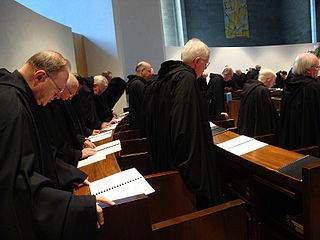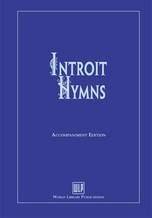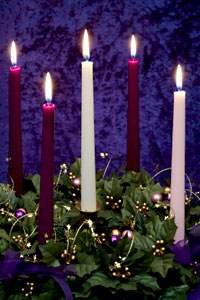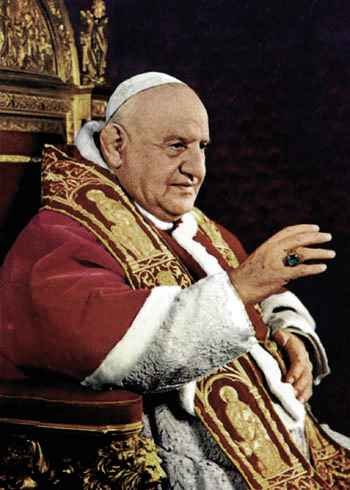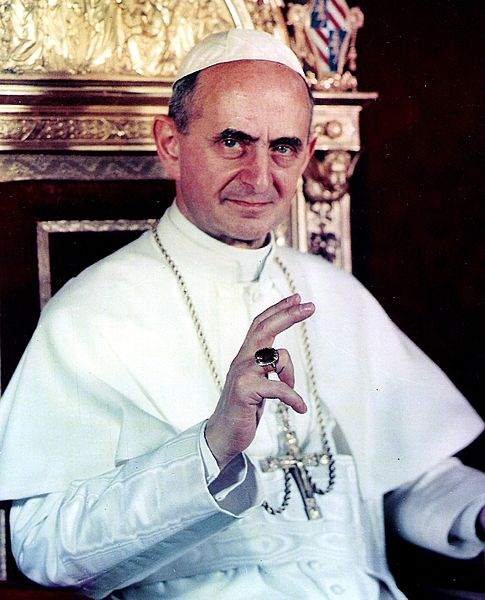
Tridentine Mass in a chapel of the Cathedral of the Holy Cross, Boston. (Wikipedia)
Last Sunday I attended my first traditional Latin Mass, at a local parish in Alabama while I was home visiting my parents. I had been meaning to check it out for a while. It was considerably different than what I’ve been used to; though I could still observe the basic form of the Mass. I wanted to briefly share my thoughts and observations.
What is commonly referred to as the “traditional” Latin Mass is also known as the Tridentine Mass (Tridentine from Tridentinus, belonging to the city of Tridentum — or Trent) — the Mass that was in use from the Council of Trent (1545–1563) until the revision of the Mass following the Second Vatican Council (1962–1965). The Mass liturgy we use today is known as the Mass of Paul VI. There is actually a bit of disagreement about what to call the pre–Vatican II Mass. The Catholics who hosted this Mass I attended were Traditionalists, and so referred to it as the “Traditional Latin Mass.”
But “Traditional Latin Mass” is something of a misnomer, I discovered. The liturgy was traditional, certainly; but the form that was presented was essentially 1962 frozen in time. I was kind of expecting something more ancient — traditional music and chant forms, in particular — but the music felt like the 1950s. It was pretty, don’t get me wrong; but it wasn’t “traditional.” My parish, especially before the recent Mass revisions, was much more traditional in its music.

Something like this.
It was immediately apparent, as soon as I entered the church, that these people were Traditionalists. All of the women wore headcoverings, mostly in the form of lace mantillas. This was kind of neat; though besides it being in the Bible (1 Corinthians 11), I don’t understand the reasons for doing it. (Is that the only reason? They argue that the requirement of headcoverings is still binding today.) If the idea of headcoverings is modesty, I must confess, like many modest fashions, I found it rather alluring, wondering what the ladies’ hair and faces looked like underneath their headcoverings.
Another thing I noticed is that the church was packed. It wasn’t a very large church, but the pews were mostly full. A man was leading the Rosary. At my church, we also pray the Rosary about thirty minutes before Mass, but there are usually only a handful of people there then. Here, everyone was praying. It was rather moving.
But here I noticed another aspect of Traditionalism: at every iteration of the Glory Be, the orator invoked the “Holy Ghost,” rather than the “Holy Spirit” as I’m used to. Throughout the entire meeting, the name “Holy Ghost” was consistently used in English (in the priest’s homily, too — this was Pentecost, so he talked about the “Holy Ghost” quite a lot). This seems to me a rather pointless traditionalism just for the sake of traditionalism. Why insist on the Germanic “ghost” rather than the Latinate “spirit” — when the Latin of the Mass, which this gathering was supposed to preserve, refers to the Spiritus Sanctus?
A couple of other aspects of the priest’s homily grated on me. He referred several times to Pentecost as the birth of the Catholic Church, and to the Holy Spirit as a gift to Catholicism; he never once used the word “Christian.” His words seemed chosen specifically to separate and exclude all others but Catholics from the celebration of the Holy Spirit — and, I suspect, he would have privileged Traditionalists if he’d had the chance.
On to the Mass itself: I picked up a little booklet that contained the Latin liturgy and an English translation on the opposite page. Now, my Latin is fairly good, though pretty rusty. But the priest celebrated the Mass ad orientem, and spoke his Latin very fluidly and not distinctly. I was almost immediately lost, and struggled to keep up in the book throughout the liturgy. I wasn’t in a very good position to see what he was doing, either, since he was facing away and I wasn’t very close, so I didn’t have any visual cues. It was very much like experiencing a liturgy in an unknown foreign language. I suppose that those who attend Latin Mass every week probably have a much easier time following and understanding — looking around, none of the regulars had the little liturgy books — but I didn’t feel that I had taken much of a part.
But that’s just it — no one really did. It was true what I had heard — that before Vatican II, the congregation didn’t really have much to do or say; that they mainly just watched the priest. The liturgical reforms of Vatican II restored many of prayers and responses of the faithful that had fallen into disuse and been transferred to the priest over the centuries; in this Mass, he said nearly all of them. The main response the people consistently had was to answer “Et cum spiritu tuo” (“And with your spirit”) to the priest’s “Pax vobiscum” (“Peace be with you”). At several other places — the Pater Noster, the Credo — the choir sang, and the faithful could sing along if they liked, but not many people did.
I also didn’t get the feeling that even the priest was speaking the Latin with a grasp or appreciation for its sense and meaning. The words were rote, for both the priest and the people. They may have known what they meant, but they didn’t act like it. A prime example that stood out to me: When the priest spoke, “Oremus” (“Let us pray”), he didn’t actually pause for anybody to pray. He did this consistently throughout the liturgy.
In the second part of the Mass, the Mass of the Faithful (so called because the non-baptized were once excluded from it; in some places they still are) — what’s known in today’s Mass as the Liturgy of the Eucharist — the priest more or less conducted the liturgy privately. His prayers were low and inaudible (at least from where I was sitting), and the sense was that he was praying for the consecration of the Host in his own intimate communion with God. The faithful weren’t a part of this.
And that, I think, is what bothered me the most. The participation of the faithful throughout the Mass — and most especially at that intimate moment of consecration — is one of the most important aspects of the Mass to me. It’s at that moment that I feel the most connected, the most in communion, with the Church and with her members and with all believers over the ages. I respect the mystery of the liturgy; I know that in the medieval church, the rood screen separated the people in the nave from the priest in the sanctuary, and that Orthodox churches have an even more solid separation in the iconostatis — but I feel, as the Vatican II Council Fathers felt, that the people should not be excluded from the liturgy. The liturgy is the work of the people; we are the people of Christ. I go to Mass to be a participant, to practice my worship actively; not to be a spectator.
One thing I liked, and this is minor, and not exclusive to a Traditionalist Mass: in receiving Communion, we went to kneel at the altar rail, and the priest walked by to communicate us. It was much more solemn and humble than our usual habit of lining up, efficient though it may be.
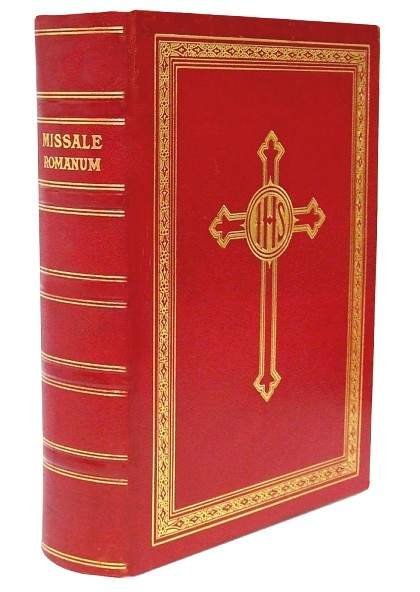
Overall, my experience at the “Traditionalist” Latin Mass was one of intriguing cultural reconnaissance, and a peek into the past, though it was the not-too-distant past: the way a Catholic would have experienced Mass in 1962. I decidedly prefer today’s Mass, especially since the recent revision. The Tridentine Mass is beautiful, and its tradition is valuable — but tradition shouldn’t stand in the way of the faithful approaching God. I think, in some basic respects, the Mass of Paul VI is more conducive to our corporate worship.
I don’t understand the Traditionalists’ objections; I admittedly haven’t read much about that. But I get the feeling that they object to change just because it is change. I do think the intentions of the Vatican II Council Fathers were good, that the reforms were needed, and that the letter of their voices in the documents is true and faithful to the tradition of the Church. The Church today is making steady progress to undo the abuses and mistakes that were wrought by modernists “in the spirit of Vatican II.”
On the Place of Latin in Our Liturgy
I value the Latin of the liturgy a lot. Contrary to popular conceptions, Vatican II didn’t eliminate Latin as the language of the Mass. Sacrosanctum Concilium, the Constitution on the Sacred Liturgy, firmly states (36),
Particular law remaining in force, the use of the Latin language is to be preserved in the Latin rites. But since the use of the [vernacular] tongue, whether in the Mass, the administration of the sacraments, or other parts of the liturgy, frequently may be of great advantage to the people, the limits of its employment may be extended. . . . These norms being observed, it is for the competent territorial ecclesiastical authority . . . to decide whether, and to what extent, the vernacular language is to be used . . .
“In the spirit of Vatican II,” modernists have run a lot further with this than they should have. The use of the vernacular language is certainly advantageous to the people. The faithful need to understand and take part in our worship and devotion. But the Latin of the Mass is our glory and our heritage, and it should be preserved and celebrated. Again, Sacrosanctum Concilium (54):
In Masses which are celebrated with the people, a suitable place may be allotted to their [vernacular] tongue. . . . Nevertheless steps should be taken so that the faithful may also be able to say or to sing together in Latin those parts of the Ordinary of the Mass which pertain to them.
When I first started attending Mass in my parish, this is what we did. We sang in Latin, in traditional chant forms, much of the Ordinary of the Mass: the Kyrie (in Greek), the Sanctus, and the Agnus Dei. And the people loved it and embraced it; it was never an impediment but an ornament to our worship. Now, since the new Mass settings ordered by our bishop, we only have the Agnus Dei in Latin. (We also still sing the Salve Regina and the other seasonal Marian antiphons in Latin.) But I would love so much to reincorporate more Latin.
What I would really like to experience, in fact — and I don’t know of anybody around here who does this — is the whole of the ordinary form of the Mass celebrated in its underlying Latin.





